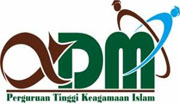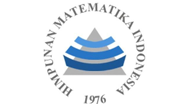Predicting Student Stress Levels Based on Lifestyle Factors Using the Catbost Algorithm
Abstract
This study developed a machine learning model to classify student stress levels based on lifestyle factors using the CatBoost algorithm. Data were collected from 630 students of the SciTech Faculty at State Islamic University of North Sumatra through a questionnaire comprising 14 Likert-scale items. Instrument validation was confirmed using Pearson’s r (>0.821, p < 0.05) and Cronbach’s Alpha (0.866). Preprocessing included outlier removal with IQR, feature encoding, stratified train-test split (80:20), and 5-fold cross-validation. The training set was imbalanced and addressed using the SMOTE technique. Model evaluation used accuracy (85%), precision, recall, and F1-score per class, with high recall (0.97) for moderate and improved F1-score (0.79) for low stress. Final classification used a 20% test subset (126 samples). Feature importance analysis identified task procrastination, poor sleep quality, and weak time management as key predictors. These findings affirm CatBoost's reliability through consistent results, scalability, and balanced evaluation metrics beyond mere accuracy.
Keywords
Full Text:
PDFReferences
M. Anastasia, V. S. Maulivia, and S. Suharjito, “Machine learning methods for assessing depression and mental health data,” INTECOMS J. Inf. Technol. Comput. Sci., vol. 7, no. 3, pp. 606–612, 2024, doi: 10.31539/intecoms.v7i3.9584.
Z. Mufatihah, A. P. Zelya, R. A. Puriani, and R. M. Putri, “The phenomenon of academic stress among university students,” J. Educ. Res., vol. 6, no. 1, pp. 573–580, 2025, doi: 10.47827/jer.v6i1.564.
K. A. S. Widiasa, D. N. Adiwibawa, I. Syuhada, and I. Winangun, “The relationship between stress levels in thesis writing and sleep quality among FK Unizar students batch 2019,” Cakrawala Med. J. Health Sci., vol. 2, no. 1, pp. 68–76, 2023, doi: 10.59981/5hergy11.
World Health Organization (WHO), World mental health report: Transforming mental health for all. Geneva: WHO, 2022. [Online]. Available: https://www.who.int/publications/i/item/9789240049338
R. K. Djoar and A. P. M. Anggarani, “Factors affecting academic stress among final-year students,” Jambura Health Sport J., vol. 6, no. 1, pp. 52–59, 2024, doi: 10.37311/jhsj.v6i1.24064.
A. P. Abdullah, I. Royani, P. N. Hamzah, S. Amir, and M. A. Jaya, “The relationship between academic workload and stress levels among UMI Medical Faculty students batch 2020,” Fakumi Med. J., vol. 4, pp. 110–119, 2024, doi: 10.33096/fmj.v4i2.393.
S. R. Anugrahaini, M. Fatchan, and T. N. Wiyatno, “Stress level prediction models among students using artificial neural network algorithms with Orange,” J. Inf. Eng., vol. 9, pp. 1–16, 2025, doi: 10.36040/jati.v9i3.13759.
N. M. Yusuf and J. M. Yusuf, “Factors influencing academic stress,” Psyche 165 J., vol. 13, pp. 235–239, 2020, doi: 10.35134/jpsy165.v13i2.84.
S. Anisa, A. Komarudin, and E. Ramadhan, “Classification system to determine general student stress levels using K-Nearest Neighbors method,” J. Inf. Technol. Sci., vol. 6, pp. 568–578, 2024, doi: 10.51401/jinteks.v6i3.4317.
R. Qasrawi et al., “Assessment and prediction of depression and anxiety risk factors in schoolchildren: Machine learning techniques performance analysis,” JMIR Form. Res., vol. 6, no. 8, pp. 1–15, 2022, doi: 10.2196/32736.
S. B. Seto, M. T. S. Wondo, and M. F. Mei, “The relationship between motivation and student stress levels in writing undergraduate theses,” J. Basicedu, vol. 4, no. 3, pp. 733–739, 2020, doi: 10.31004/basicedu.v4i3.431.
R. Tasalim and A. R. Cahyani, Academic Stress and Its Management, Banjarmasin: Guepedia, 2021. ISBN: 978-623-270-839-6. [Online]. Available: www.guepedia.com.
N. Widyawati, M. Khasanah, Muttaqin, E. Rasywir, and A. Feranika, “Stress level prediction among students of Universitas Dinamika Bangsa Jambi during hybrid learning using Naive Bayes algorithm,” J. Inf. Syst. Manag., vol. 2, pp. 99–110, 2022, doi: 10.33998/jms.2022.2.1.44.
W. Clariska, Yuliana, and Kamariyah, “The relationship between stress level and sleep quality among final-year students of the Faculty of Medicine and Health Sciences, Universitas Jambi,” J. Indones. Nurs. Sci., vol. 1, pp. 94–102, 2020, doi: 10.22437/jini.v1i2.13516.
Hariaty, V. Elita, and A. Dilaluri, “Overview of stress among final-year students working on their theses,” J. Prof. Nurs., vol. 11, pp. 1–7, 2023, doi: 10.33650/jkp.v11i1.5539.
M. Maulidah and N. Hidayati, “Prediction of sleep health and lifestyle using machine learning,” Comput. Netw. Technol., vol. 4, pp. 81–86, 2024, doi: 10.31294/conten.v4i1.4918.
M. Saifudin, S. R. Adawiyah, and I. Mukhaira, “Factors influencing academic stress levels among non-regular nursing students,” J. Health, vol. 12, no. 2, pp. 199–207, 2023, doi: 10.37048/kesehatan.v12i2.267.
Y. Suharsono and Z. Anwar, “Stress analysis and self-adjustment among university students,” J. Online Psychol., vol. 8, pp. 1–12, 2020, doi: 10.22219/cognicia.v8i1.11527.
N. Bachtiar, M. I. Hasan, and C. Andodo, “Academic stress among health students related to psychological, physiological changes, motivation, and learning quality,” J. Health Sci. Technol., vol. 14, pp. 11–20, 2023, doi: 10.36308/jik.v14i2.539.
N. D. Syandika and W. Yustanti, “Anomaly detection in transaction cancellation on Tiktok Shop using CatBoost algorithm,” J. Inf. Comput. Sci., vol. 5, pp. 149–156, 2023, doi: 10.26740/jinacs.v5n02.p149-156.
Z. Fan, J. Gou, and S. Weng, “A feature importance-based multi-layer CatBoost for student performance prediction,” IEEE Trans. Knowl. Data Eng., vol. 36, no. 11, pp. 5495–5507, 2024, doi: 10.1109/TKDE.2024.3393472.
R. Irfannandhy, L. B. Handoko, and N. Ariyanto, “Performance analysis of Random Forest and CatBoost with SMOTE for diabetes risk prediction,” Edumatic J. Inf. Educ., vol. 8, pp. 714–723, 2024, doi: 10.29408/edumatic.v8i2.27990.
T. Z. Jasman, M. A. Fadhullah, A. L. Pratama, and Rismayani, “Analysis of Gradient Boosting, AdaBoost, and CatBoost algorithms in water quality classification,” J. Inf. Syst. Eng., vol. 8, pp. 392–402, 2022, doi: 10.28932/jutisi.v8i2.4906.
D. M. Putri, Fahrizal, A. Rahmawati, and B. W. Akramunnas, “Comparison of CatBoost and XGBoost algorithms in heart disease classification,” J. Appl. Technol., vol. 15, pp. 126–133, 2023, doi: 10.30606/aptek.v15i2.1930.
G. Ravindiran et al., “Air quality prediction by machine learning models: A predictive study on the Indian coastal city of Visakhapatnam,” Chemosphere, vol. 338, 2023, doi: 10.1016/j.chemosphere.2023.139518.
A. M. E. F. Firmandani, A. Hudawi, and A. Tholib, “CatBoost model optimization with feature selection and hyperparameter tuning for potential bank customer prediction,” Acad. J. Comput. Sci. Res., vol. 6, pp. 118–127, 2024, doi: 10.38101/ajcsr.v6i2.15656.
A. F. Istianto, A. Id Hadiana, and F. R. Umbara, “Rainfall prediction using Categorical Boosting (CatBoost) method,” J. Inf. Eng. Student J., vol. 7, no. 4, pp. 2930–2937, 2023, doi: 10.36040/jati.v7i4.7304.
H. Mulyo and A. K. Zyen, “The effect of hyperparameter tuning on Gradient Boosting for predicting new student major selection,” Bull. Comput. Sci. Res., vol. 5, no. 2, pp. 131–137, 2025, doi: 10.47065/bulletincsr.v5i2.454.
W. Nugraha and M. Syarif, “Weighting techniques to address class imbalance in churn prediction using XGBoost, LightGBM, and CatBoost,” Techo.Com, vol. 22, pp. 97–108, 2023, doi: 10.33633/tc.v22i1.7191.
M. T. Syamkalla, S. Khomsah, and Y. S. R. Nur, “CatBoost and SHAP implementation for predicting indie game popularity on Steam,” J. Inf. Technol. Comput. Sci., vol. 11, no. 4, pp. 777–786, 2024, doi: 10.25126/jtiik.1148503.
A. Ulul, A. Wafiqi, B. A. James, A. H. Ramadhan, and A. Nizar, “Stress level prediction in students of UNUGHA Cilacap,” J. Teknokompak, vol. 18, no. 2, pp. 331–343, 2024, doi: 10.33365/jtk.v18i2.3933.
F. N. Zahrah and Muljono, “Machine learning for student stress detection: Perceptron as an effective classification model for early intervention,” Edumatic J. Inf. Educ., vol. 8, no. 2, pp. 764–773, 2024, doi: 10.29408/edumatic.v8i2.28011.
D. F. Astari, Y. H. Chrisnanto, and Melina, “Classification of stress levels during sleep using Random Forest algorithm,” J. Inf. Eng., vol. 7, no. 5, pp. 3676–3684, 2023, doi: 10.36040/jati.v7i5.7750.
D. Kurniawan, Introduction to Machine Learning with Python, Jakarta: Elex Media Komputindo, 2021. ISBN: 978-623-00-2174-9.
DOI: http://dx.doi.org/10.30829/zero.v9i1.24537
Refbacks
- There are currently no refbacks.

This work is licensed under a Creative Commons Attribution-ShareAlike 4.0 International License.
Publisher : Department of Mathematics Faculty of Science and Technology Universitas Islam Negeri Sumatera Utara Medan | |
✉️ Email: zero_journal@uinsu.ac.id 📱 WhatsApp:085270009767 (Admin Official) | |
 |  |  |  |  |



